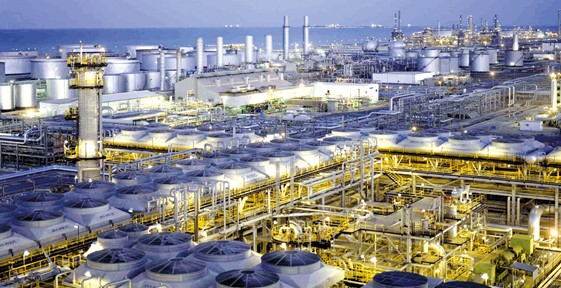How the War Affected Saudi Aramco
As geopolitical tensions between Russia & Ukraine escalate, oil has become even more scarce amid global supply limitations. This is because the United States and their allies will likely impose sanctions on Russia, should the nation carry on its invasion on Ukraine. Given that Russia is one of the world’s major oil producers, exporting around 10% of the global oil supply, crude oil will likely be even more limited in the near future. Amid high global demand for oil and limited supply, Saudi Aramco is thriving as it generates higher profit margins for each barrel they produce.
Recent Performance
In November of 2021, the stock price of Saudi Aramco witnessed its biggest fall in over a year, as Yemen’s Houthi-led drone attacks hampered the oil giant, slashing its stock price by over 7%. The company also reported a 44% drop in full-year 2020 results, amid the first global surge of the coronavirus pandemic. However, the company has bounced back recently.
In the third quarter of 2021, the company reported a 160% soar in net income, valued at $30.4 billion, with its free cash flow escalating 131% as the market recovers. The oil giant is enjoying high global demand for oil amid recent tensions. This has pushed its stock price back to recent all-time highs, currently priced at 37.30 SAR ($9.94) per share. Now, how does the stock look from a technical perspective?
Technical Analysis

From a technical perspective, we can notice from the chart provided by TradingView, that the Saudi Aramco stock (TADAWUL: 2222) is comfortably trading in the upper part of its 52-week range. The stock is trading between a support level of 34.83 SAR ($9.28 USD) and two resistance levels; a lower one at 37.51 SAR ($10) and a higher one at 38.70 SAR ($10.31). The stock of the oil giant is looking solid, but it is best advised that investors await a lower entry point before jumping in, as it’s quite near the lower resistance level.
*Note: “D” marks the time when the company paid dividend to its shareholders. Recently, investors were not too impressed with Saudi Aramco’s dividend payouts, amid oil surge.
Future Expectations
The oil giant has several plans for the future. First and foremost, the company aims to restart initiatives for a second listing of Aramco shares, with the goal of selling up to $50 billion worth of stake, as demand for the company’s offerings and optimism for its future escalates. This equates to approximately 2.5% of its current valuation. This is expected to attract more investors to the company, and therefore, a brighter future for Saudi Aramco as it will benefit with more capital and liquidity.
Another future plan for the big business would be to capitalize on emerging markets, which serve as compliments the company’s existing investments in gas and oil. According to the company itself, it signed five Memoranda of Understanding (MoUs) with several companies:
Modern Industrial Holding Group and Intercontinental Energy, which focuses on green hydrogen and ammonia projects in Saudi Arabia;
South Pole Carbon Asset Management & Yousef Abdulrahman AlDhabyan Agricultural Est. (YADGREEN), focused on reducing greenhouse gas emissions;
BFG, aimed at localizing advanced nonmetallic building manufacturing, and research & development collaborations;
ABB, focused on exploring the localization capabilities of digital technologies for oil and gas applications.
Initial Public Offering
Saudi Aramco became a public company quite recently, with its IPO (initial public offering) occurring on the 11th of December in 2019, on Riyadh’s stock market. The IPO of the state-owned oil company is considered to be record-breaking, valuing the company at $1.88 trillion just from its debut. Today, Saudi Aramco is worth around $2 trillion, joining Microsoft and Apple in the two trillion-dollar club.
Trading in leverage products carries a high level of risk and may not be suitable for all investors. Past performance of an investment is no guide to its performance in the future. Investments, or income from them, can go down as well as up. You may not necessarily get back the amount you invested. All opinions, news, analysis, prices or other information contained in our communication and on our website, are provided as general market commentary and do not constitute investment advice, nor a solicitation or recommendation to buy or sell any financial instruments or other financial products or services.


